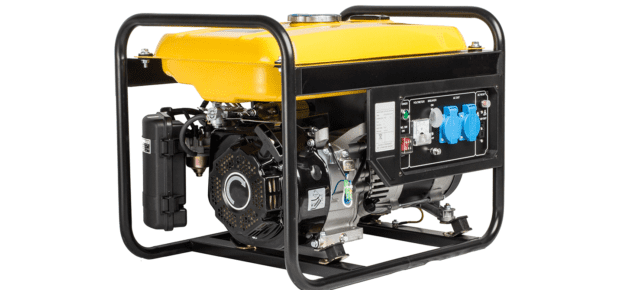January 18, 2018
In order to reduce our environmental impact amid increasing global electrical use, there’s a push to improve the efficiency and precision of our core technologies. Motors are vital to life as we know it – they power a huge number of systems and devices, so they’re an ideal case study of how an existing technology is becoming more green.
First, some history. Direct current (DC) motors were first produced in the 1830s. It didn’t take long for inventors to pine for alternating current (AC) motors; the early work of Galileo Ferraris and Nikola Tesla helped bring that technology to life in the 1880s. But it would be almost 100 years before some of the biggest advancements started taking place.
Enter the global energy crisis of the 1970s, which brought severe petroleum shortages to North America, Europe and Japan. This shock to the energy supply market made it clear that developing energy-saving motors was necessary. Few countries heeded the call as seriously as Japan.
As their semiconductor industry began to boom in the 90s, Japan helped fuel R&D that brought about high-performance, adjustable-speed AC motors. In the years since, these motors have become a staple of modern industry and transportation, and have led to significant progress in inverter technology.
In recent years, they’ve found use on Japanese high-speed trains, elevators and cars. And as the drive to reduce vehicle emissions has grown, AC motors are playing an increasingly central role. There’s even been buzz recently of the aerospace industry moving toward greater use of electrical systems to improve fuel economy and cost. Just as electric and hybrid vehicles have been used in the automotive industry, they may soon become commonplace in the sky.
For future AC drive systems, there are still some hurdles to clear. High-performance control technology is still a work in progress, and so is increasing the reliability of the drive system.
In vehicle applications, loudness, vibration and noise are still being worked on to create a more comfortable experience. Starting torque, slip control, coasting and the smoothness of acceleration and deceleration are also areas that are being improved.
It will be exciting to watch this technology progress in the coming years, especially with such a wide range of applications. Learn more about the next generation of AC motors at IEEE Xplore here.
For More Information
New Technical Trends on Adjustable Speed AC Motor Drives
Adjustable speed AC Motor drives have been used extensively in modern industry and transportation which calls for electrical and [...]





 Liquid Infrastructure: Our Planet's Most Precious Resource
Liquid Infrastructure: Our Planet's Most Precious Resource The Impact of Technology in 2025
The Impact of Technology in 2025 Quantum and AI: Safeguards or Threats to Cybersecurity?
Quantum and AI: Safeguards or Threats to Cybersecurity? Why AI Can't Live Without Us
Why AI Can't Live Without Us Bits, Bytes, Buildings and Bridges: Digital-Driven Infrastructure
Bits, Bytes, Buildings and Bridges: Digital-Driven Infrastructure Impact of Technology in 2024
Impact of Technology in 2024 Emerging AI Cybersecurity Challenges and Solutions
Emerging AI Cybersecurity Challenges and Solutions The Skies are Unlimited
The Skies are Unlimited Smart Cities 2030: How Tech is Reshaping Urbanscapes
Smart Cities 2030: How Tech is Reshaping Urbanscapes Impact of Technology 2023
Impact of Technology 2023 Cybersecurity for Life-Changing Innovations
Cybersecurity for Life-Changing Innovations Smarter Wearables Healthier Life
Smarter Wearables Healthier Life Infrastructure In Motion
Infrastructure In Motion The Impact of Tech in 2022 and Beyond
The Impact of Tech in 2022 and Beyond Cybersecurity, Technology and Protecting Our World
Cybersecurity, Technology and Protecting Our World How Technology Helps us Understand Our Health and Wellness
How Technology Helps us Understand Our Health and Wellness The Resilience of Humanity
The Resilience of Humanity Harnessing and Sustaining our Natural Resources
Harnessing and Sustaining our Natural Resources Creating Healthy Spaces Through Technology
Creating Healthy Spaces Through Technology Exceptional Infrastructure Challenges, Technology and Humanity
Exceptional Infrastructure Challenges, Technology and Humanity The Global Impact of IEEE's 802 Standards
The Global Impact of IEEE's 802 Standards Scenes of our Cyber Lives: The Security Threats and Technology Solutions Protecting Us
Scenes of our Cyber Lives: The Security Threats and Technology Solutions Protecting Us How Millennial Parents are Embracing Health and Wellness Technologies for Their Generation Alpha Kids
How Millennial Parents are Embracing Health and Wellness Technologies for Their Generation Alpha Kids Space Exploration, Technology and Our Lives
Space Exploration, Technology and Our Lives Global Innovation and the Environment
Global Innovation and the Environment How Technology, Privacy and Security are Changing Each Other (And Us)
How Technology, Privacy and Security are Changing Each Other (And Us) Find us in booth 31506, LVCC South Hall 3 and experience the Technology Moon Walk
Find us in booth 31506, LVCC South Hall 3 and experience the Technology Moon Walk Virtual and Mixed Reality
Virtual and Mixed Reality How Robots are Improving our Health
How Robots are Improving our Health IEEE Experts and the Robots They are Teaching
IEEE Experts and the Robots They are Teaching See how millennial parents around the world see AI impacting the lives of their tech-infused offspring
See how millennial parents around the world see AI impacting the lives of their tech-infused offspring Take the journey from farm to table and learn how IoT will help us reach the rising demand for food production
Take the journey from farm to table and learn how IoT will help us reach the rising demand for food production Watch technical experts discuss the latest cyber threats
Watch technical experts discuss the latest cyber threats Explore how researchers, teachers, explorers, healthcare and medical professionals use immersive technologies
Explore how researchers, teachers, explorers, healthcare and medical professionals use immersive technologies Follow the timeline to see how Generation AI will be impacted by technology
Follow the timeline to see how Generation AI will be impacted by technology Learn how your IoT data can be used by experiencing a day in a connected life
Learn how your IoT data can be used by experiencing a day in a connected life Listen to technical experts discuss the biggest security threats today
Listen to technical experts discuss the biggest security threats today See how tech has influenced and evolved with the Games
See how tech has influenced and evolved with the Games Enter our virtual home to explore the IoT (Internet of Things) technologies
Enter our virtual home to explore the IoT (Internet of Things) technologies Explore an interactive map showcasing exciting innovations in robotics
Explore an interactive map showcasing exciting innovations in robotics Interactively explore A.I. in recent Hollywood movies
Interactively explore A.I. in recent Hollywood movies Get immersed in technologies that will improve patients' lives
Get immersed in technologies that will improve patients' lives